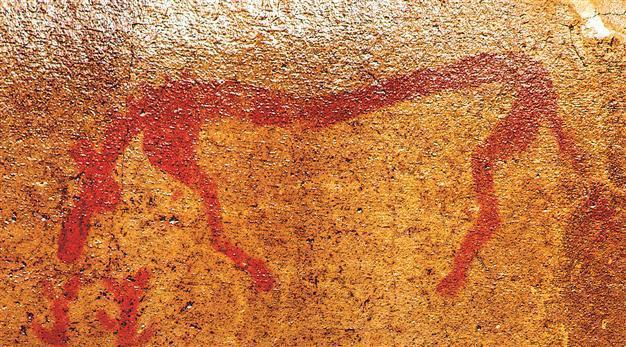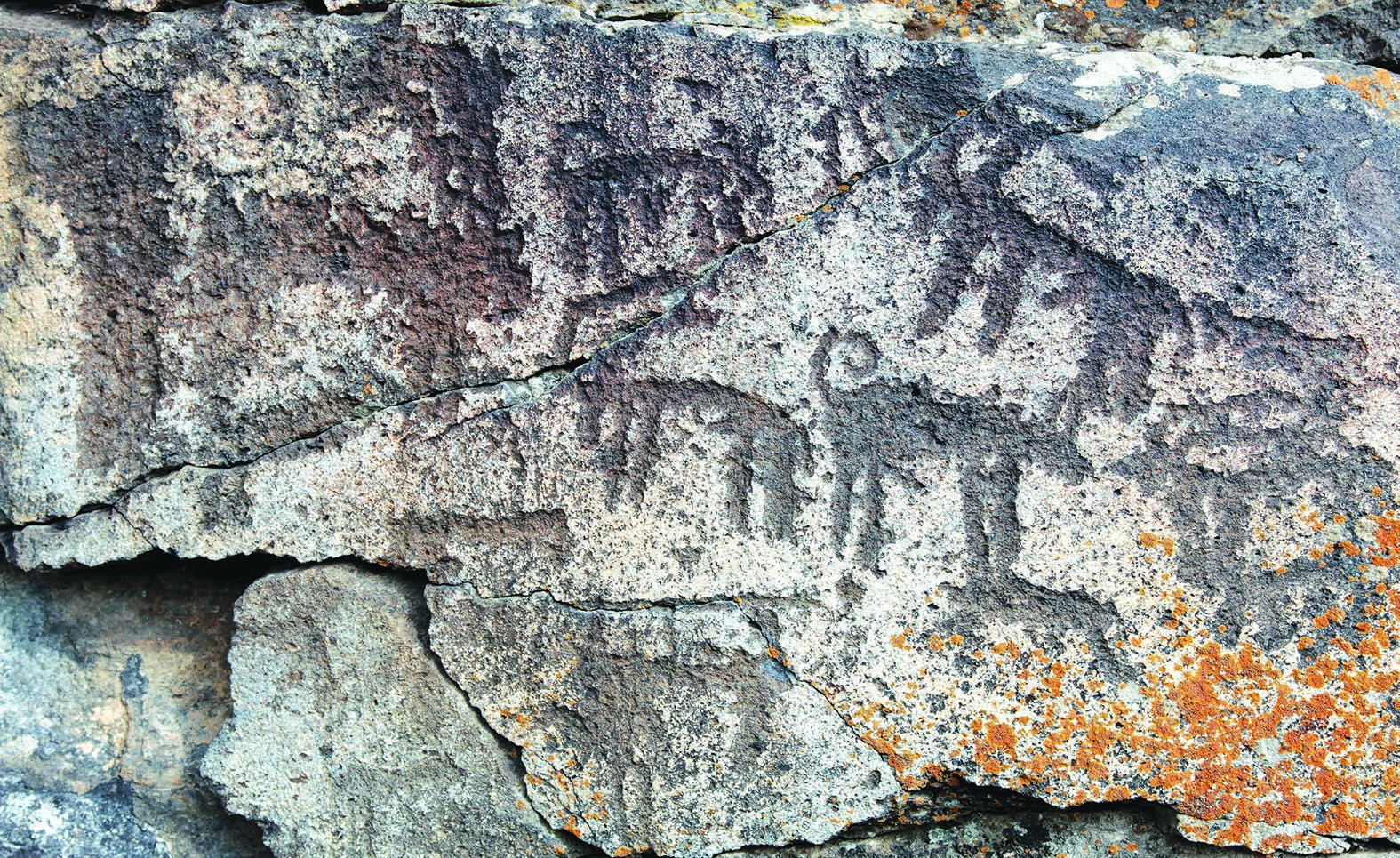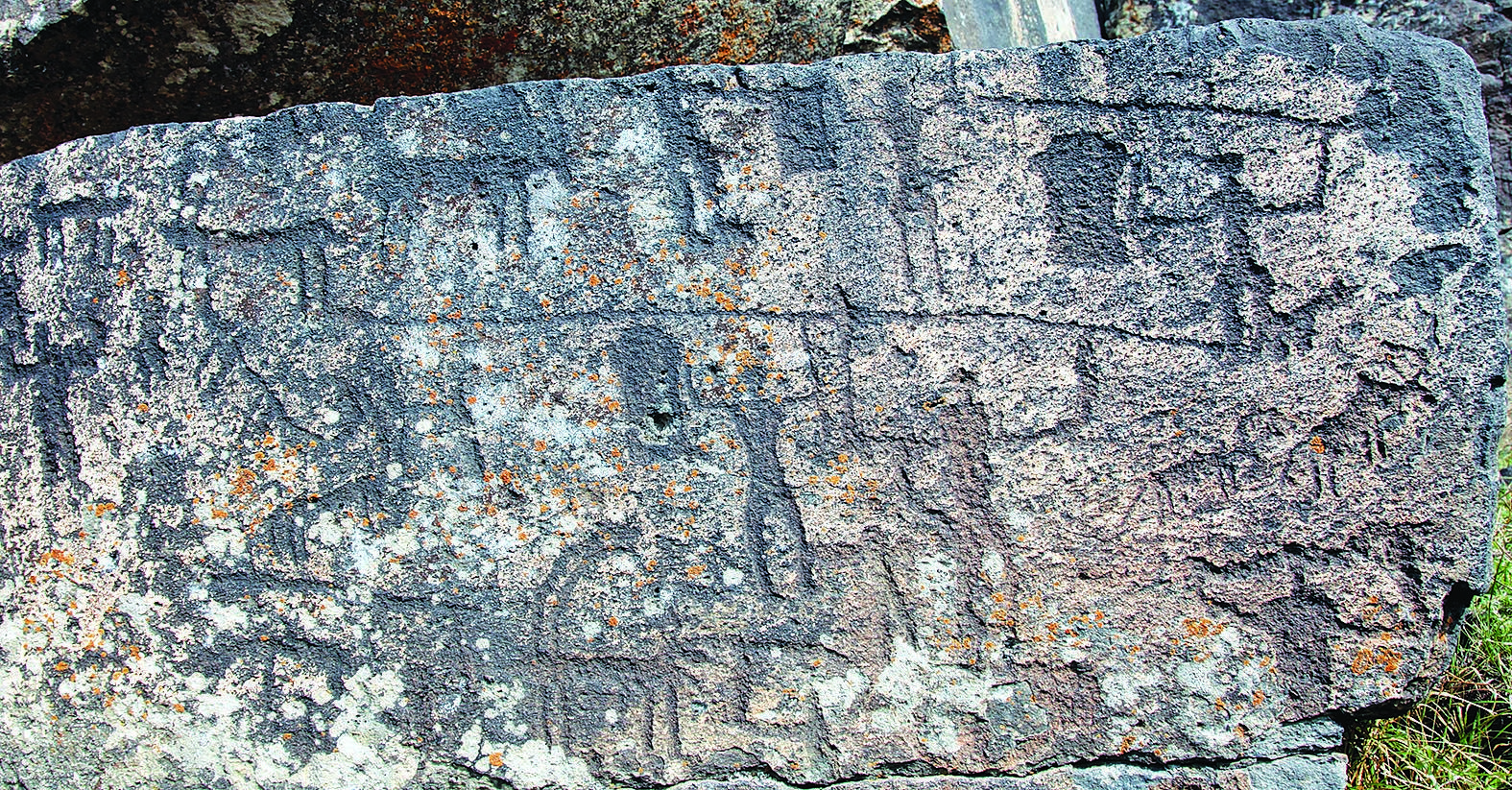Ani’s rock paintings belong to humanity
KARS - Anadolu Agency

Fifteen rock paintings are depicting hunting scenes with horses, dogs, mountain goats, deer and humans. AA Photos
The head of the Culture and Arts Association in the eastern province of Kars, Vedat Akçayöz, has said the registration of 15 rock paintings discovered around the Alem village, some 11 kilometers away from the ancient city of Ani on the Turkish-Armenian border, has been sent to the Museum Directorate, adding the hope was to have the entire area added to UNESCO’s World Heritage list.Akçayöz said the 15 rock paintings carved on the rocks depicted hunting scenes with horses, dogs, mountain goats, deer and humans.
He said that upon their application, Kars Museum Director Necmettin Alp, Culture and Tourism Provincial Director Hakan Doğançay and Board of Protection of Cultural Property Director Yasin Dursun had begun works to register the Prehistoric-era rock paintings.
Akçayöz said they had asked for the region to be declared an archaeological site, adding they hoped the ancient city of Ani and its environment would be included in the UNESCO World Heritage list in 2016.

Stating that the association had been supporting Kars’ culture and arts for 15 years, Akçayöz said the following:
“2016 will be a very important year for the future of Ani, Kars and Turkish tourism. The Alem village is home to 15 rock paintings that have never been examined and belong to humanity. The importance of this discovery is that Ani and its environment dates back thousands of years older than we had known. Therefore the inns, rock tombs and settlements around the ancient city of Ani should be declared an archaeological site as a whole. Works have started in the rock tombs. On Nov. 24, a committee including the museum director, archaeologist and art historians coordinated to collect the data for registration. These rock paintings will play a significant role for the ruins of Ani to be included in the UNESCO list in 2016.”
The ancient Ani was once the capital of a medieval Armenian kingdom that covered much of present-day Armenia and eastern Turkey. Ani is protected on its eastern side by a ravine formed by the Akhurian River and on its western side by the Bostanlar or Tzaghkotzadzor Valley. The Akhurian is a branch of the Aras River and forms part of the current border between Turkey and Armenia.

















